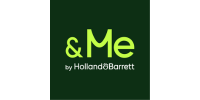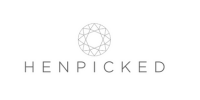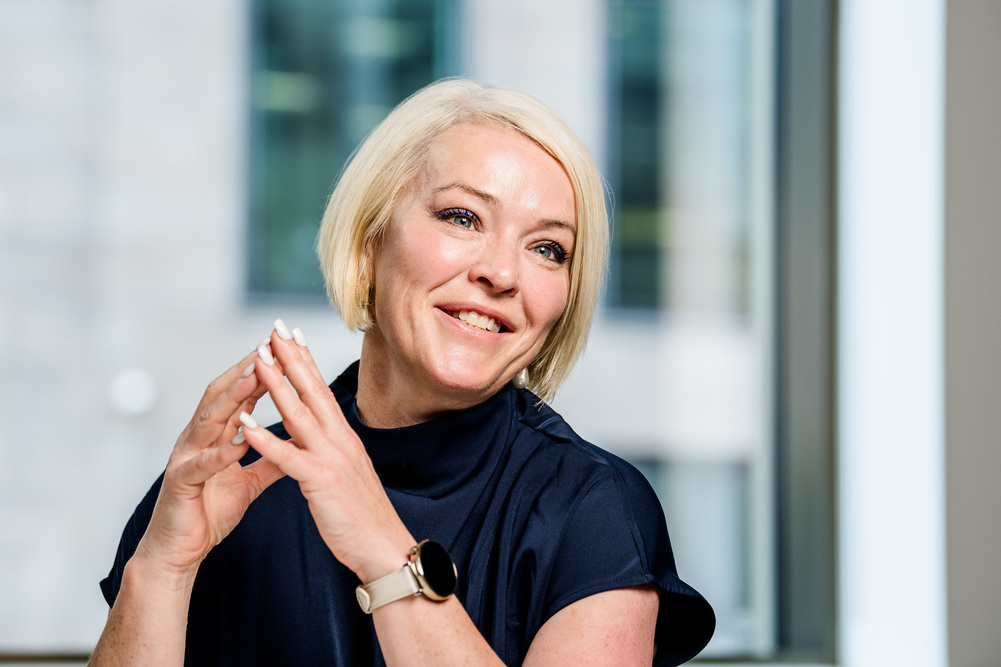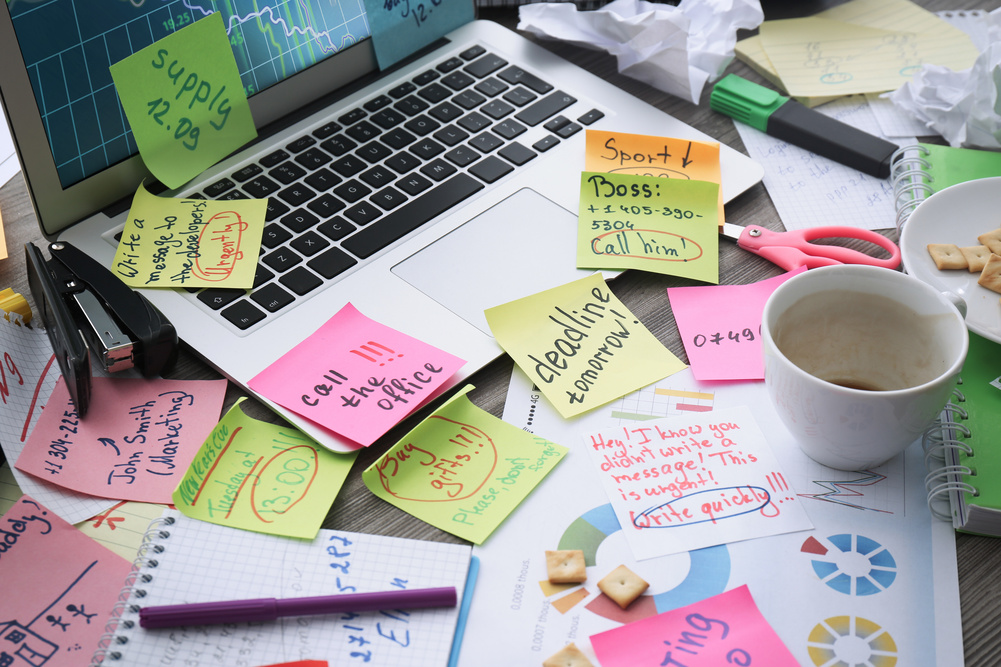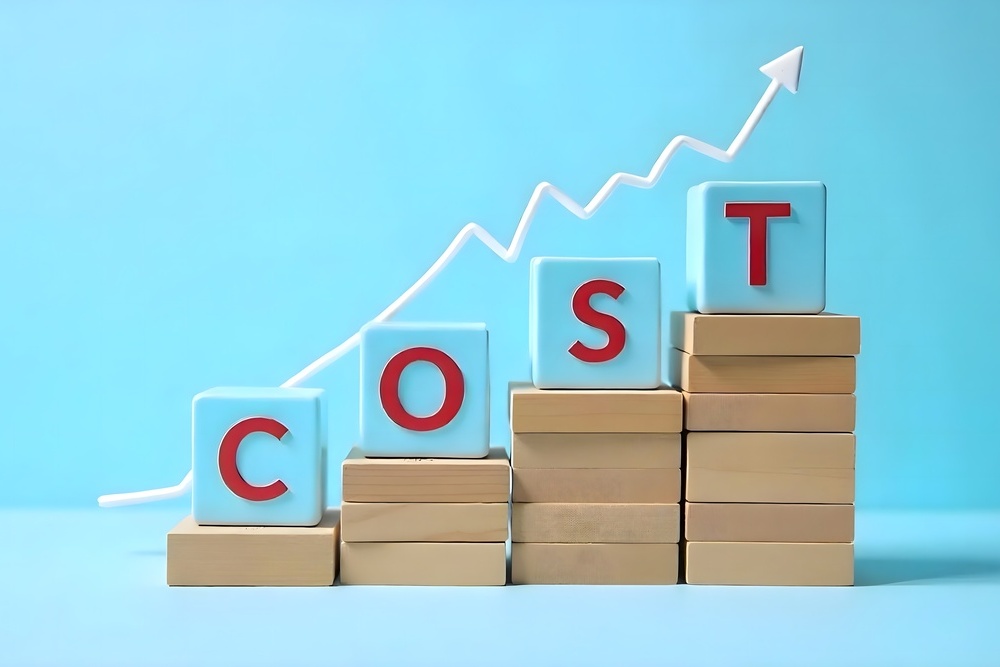Show news and features from our partners Make a Difference Media.
Latest Make A Difference News
New data from Acas reveals a sharp rise in employment disputes in Britain, sparking calls for earlier intervention and a stronger focus on workplace culture. This pressure on employers is only likely to keep mounting, say experts, with the introduction of the forthcoming Employment Rights Bill and raised awareness amongst employees of their rights.
Acas’s 2024-5 Annual Report shows that it handled nearly 118,000 early conciliation cases in the past year, the highest number since the pandemic. This marks a 13,000-case jump on the year before. The surge suggests growing dissatisfaction among workers, as well as a possible rise in grievances relating to pay, treatment, or unresolved internal issues.
This 13% rise from the previous year signals a marked resurgence in individual employment grievances. Most notably, cases relating to discrimination or whistleblowing rose nearly 29%, illustrating a sharper and more complex dispute landscape.
Increasingly fragile workplace climate
Though nine in ten cases were resolved before reaching employment tribunal, according to Acas, the rising numbers paint a picture of an increasingly fragile workplace climate where unresolved tensions are escalating to formal action.
Acas Chair Clare Chapman said:
“The rise in individual disputes is concerning: just one conflict escalating can cause huge cost and stress to employer and employee. We call on all Britain’s employers and employees to work together to resolve conflict early.”
She said that small businesses particularly need support to avoid the damaging consequences of conflict.
New bill will raise awareness of rights
The Employment Rights Bill is expected to come into force in 2026. This bill proposes to remove the two-year minimum service requirement for unfair dismissal claims and extends filing deadlines from three to six months.
Legal experts predict that the new legislation could open the door to a wave of tribunal claims from day one of employment.
According to legal firm Farrer & Co this is already happening, with its recent report on dispute resolution trends showing a rise in discrimination claims. These claims particularly related to mental health, neurodiversity, sexual harassment and emerging “protected beliefs” conflicts.
Employers need to mitigate risks
The same report reported an uptick in tribunal claims tied to economic hardship, pay freezes, redundancies and broader cost‑of‑living pressures.
In the face of this pressure and new legislation, employers need to work harder to mitigate the risk of claims by implementing effective reasonable adjustments, assessing risks proactively and training managers better.
They also need to have adequate procedures in place to handle them promptly and fairly.
This research from Acas underscores the value of early resolution and informal conflict handling and creating psychologically safe spaces where concerns can be constructively addressed.
You might also like:
Workplace disputes soar to pre-pandemic levels as pressure mounts on employers to resolve conflict earlier
In the current climate where budgets are under pressure, one of the biggest challenges that Leaders face is how they can phase out, or update, wellbeing resources that no longer serve their purpose without employees feeling like support is being taken away.
In fact, this was a question that one of our Leaders Club members came to us with, which prompted a rich conversation on LinkedIn (for more about joining our Leaders Club, see here).
We’ll be covering this topic as part of the session entitled: What Works Now: Updating Your Health & Wellbeing Offer for a New Era at the Leaders’ Summit at MAD World on 9th October. You can find out more and register here.
Below, we’ve summarised some of the most useful perspectives and strategies that were shared.
Make clear why updating resources is necessary
First, it’s worth communicating to employees that resources that were relevant a few years ago may no longer be fit for purpose, holding onto them “just in case” can dilute impact and make it harder for employees to navigate the current support landscape.
Streamlining services, in other words, isn’t about reducing care — it’s about increasing clarity and relevance.
But how can this be done in a way that is seen not as a loss, but as a step forward?
Start with strategy and data
Dr Jo Burrell, Cofounder of Ultimate Resilience, emphasises the importance of grounding decisions in evidence:
“if you’re delivering a wellbeing initiative, you should be evaluating its effectiveness. That data can then be used to drive your strategy.”
This point is echoed by Karl Bennett, Wellbeing Adviser of Perkbox Vivup and Chair of EAPA and UK Chair of EAPA, who advises organisations to revisit the original purpose of their wellbeing services and ask two key questions:
- has the wellbeing resource had an impact?
- what has engagement looked like?
“If it has no impact and people aren’t using it, be honest with people and say just that,” he says. “Employers need to be brave.”
However, as was raised during a Leaders’ Club meeting, low usage doesn’t always equate to low impact. For some services, a small number of users may experience a significant positive change — which means measuring success requires more nuance than just numbers alone.
Don’t just track usage — understand engagement
There’s a difference between usage and engagement.
As Bennett says:
“High usage of an EAP can suggest a lack of proactive wellbeing support. High engagement, however, can indicate employees understand the service and are using it to support their wellbeing before crises arise.”
But how do you know the difference in usage types?
To truly assess value, organisations need to dig deeper and more meaningfully into the data and ask:
Are employees aware of the service?
Do they understand its purpose?
Do line managers advocate for it?
These are the kinds of questions that can uncover whether a service has simply flown under the radar, rather than fallen short.
Communicate the “Why” – clearly and honestly
No matter how strategic your decision, communication is everything. Debra Corey, Founder of Step It Up HR, puts it simply:
“it all starts with explaining the why.”
Employees might not love the change, but they’re more likely to respect and understand it if they know the rationale.
This idea of effective storytelling is echoed by Rewards Consultant Jane Vivier:
“Explain the change, the need for change, why the new world is better.”
Where possible, she suggests offering the outgoing benefit as a flexible, opt-in option — giving employees choice, and the feeling of being listened to, while still moving forward.
Amanda Moore, Senior Director, Reward, Performance & Analytics at Beyond ONE, sums it up perfectly saying:
“Frame changes around growth, relevance, and impact. We’re not taking something away — we’re making space for what matters most now.”
Share the data, share the process
Transparency is key. Don’t just say the change is strategic — show how you got there.
Claire Haley, Workplace Wellbeing Manager, recommends aligning the messaging with the organisation’s current wellbeing strategy and evolving priorities:
“Most important is to demonstrate understanding of the evolving needs of the workforce, including any available data insights that have scaffolded decisions.”
Moore adds that bringing employees into the process early makes a big difference:
“Be transparent about the insights that shaped the shift. Share the data!”
Co-create the future with employees
Moore says that “cocreation” with employees is “very underrated” but very powerful.
From employee resource groups to internal champions, involving employees in shaping and testing new solutions builds ownership and trust.
As Moore has seen firsthand:
“when people feel heard and see the ‘why’ behind the change, they’re much more likely to view it as a positive evolution rather than a loss.”
From employee resource groups to internal champions, involving employees in shaping and testing new solutions builds ownership and trust.
Echoing this sentiment, Claire Walsh, Health, Wellbeing and Injury Prevention Manager, UK & International, BAE Systems, suggests:
“Engaging with employee groups through consultation forums is a good approach. For example, Trade Union colleagues can be a massive asset in this area. It should always be about evolution, not revolution. As employee demographics and business needs change along with the organisation and external factors, a needs assessment is a great place to start — comparing what you have against what you need, then selling the benefits of the change!”
This approach ensures wellbeing changes are not just top-down directives but shaped through meaningful, representative input.
Test, train, and tell the story
To smooth the rollout of any new or updated offer, a multi-pronged approach is recommended:
- Pilot the changes with a small group and gather testimonials
- Equip line managers to have confident conversations about the rationale
- Leverage champions and ERGs to build credibility and share peer-driven stories
This storytelling approach also helps maintain a sense of continuity — showing how the new support builds on what came before, rather than replacing it entirely.
Keep it human
Finally, don’t underestimate the emotional impact of change — especially when it comes to support services.
As Communications Specialist Michelle Okwudiafor, who has a background particularly in engaging employees from under-represented backgrounds, advises:
“Frame your message as an evolution, not a cut. For example: ‘We’re refreshing our wellbeing offer to better meet your needs.’”
Every decision and every communication should reflect empathy, transparency, and a genuine desire to support people better.
A new chapter, not a closed book
When decisions are based on evidence, shaped by employee voice, aligned to strategy, and communicated with clarity, they become a sign of progress — not retreat.
The best transitions combine rigour and empathy, data and dialogue. And, as the experiences shared by our community of wellbeing leaders show, they offer a real opportunity to re-energise your support, re-engage your people and write the next chapter of your wellbeing strategy together.
Don’t forget, we’ll be covering this topic as part of the session entitled: What Works Now: Updating Your Health & Wellbeing Offer for a New Era at the Leaders’ Summit at MAD World on 9th October. You can find out more and register here.
You might also like:
How do you trim Health and Wellbeing resources without losing employee trust?
There very well may be a crisis in masculinity, but the call is coming from inside the house. (Sofi is writing this piece in response to our recent coverage Is it time for a Spice Boys revolution? and Celebrating masculinity isn’t toxic, or anti-equality).
We are witnessing significant shifts in gender dynamics today, and with that comes a lot of confusion, fear, and blame.
But to truly understand the crisis some say masculinity faces, we need to start by remembering where the calls for women’s rights and feminism began. We need to remember how the patriarchal conditions that necessitated feminism still exist, which is why the work of women’s rights and equity remains unfinished.
Many women still face inequality at work
Feminism emerged as a response to deeply entrenched inequalities. Around the world, many women still struggle for autonomy, agency and the freedoms feminism promised decades ago. Sadly, we still have countries that have labour laws restricting the kind of work women can do.
The global gender pay gap remains stubborn, with women earning on average just 77 cents to every dollar earned by men and projections estimating it could take over a century to close this gap fully. Ironically, amidst all these figures, the very small steps the world takes collectively, year on year, to advance the liberation of women are often seen as attacks on masculinity and men.
But what about men?
In 2019, I ran an event for International Men’s Day. It was a response to a cry I heard in March of every year: “But what about men!”. It was a way to tell the men I worked with that they matter, that they are seen and that the issues they face in this modern world do not go unnoticed.
A guest speaker came on, and he spoke passionately about growing in a male oriented society, about language and vocabulary that defined what a “man” is and does.
Then he uttered the words: “toxic masculinity”. I was watching the attendance online, as a good moderator would, and noticed immediately a 30-40% drop in attendees. It wasn’t lunch hour, there was no logical reason for people to drop off so abruptly.
You lost me at “toxic”
Once the event was over, a colleague texted me to say: “you lost me at toxic masculinity; there is nothing toxic about me being a man”. Another colleague sent a long letter stating that he, and others, felt that men were not celebrated enough and it turned him off.
Toxic masculinity remains an issue and has given birth to what is now called “The Male Loneliness Epidemic” and its bastard child, the “Manosphere”.
Yes, there are challenges that men continue to face, and these challenges are rooted in a patriarchal system that was designed to advantage men in the first place. The discomfort some men feel is less about women moving forward, and more about the old systems they thrived in beginning to crumble.
As society pushed for gender equity, whether in pay, representation, or health, few paused to recognise how these patriarchal roots shaped our communication, media, workplaces and education systems.
Boys don’t have essential tools
Boys and young men have often been left without the emotional tools, social skills or frameworks needed to navigate today’s complex world of social media, evolving gender roles, and increasing mental health challenges. Instead of examining this gap, we often hear calls to halt progress for women so men can “catch up.” Such a stance risks reversing hard-won gains and fuels resentment rather than solutions.
The rise of movements like #MeToo demanded emotional awareness and vulnerability from men, yet many withdrew out of fear. This was often due to the fear of saying the wrong thing or being “cancelled.”
This withdrawal has pushed some men into echo chambers like the manosphere, where toxic role models flourish, perpetuating narrow, harmful ideas about what it means to be a man. These distorted images of manhood deeply influence younger generations, creating cycles of confusion and isolation.
Ignoring the intersections
It’s also important to remember that these conversations are often trapped in a binary frame, ignoring intersectional and LGBTQ+ perspectives. We still operate in a world designed for heterosexual, cisgender norms, which excludes many lived experiences.
Moreover, the persistent undervaluing of care work, which women disproportionately bear, adds another layer of inequality. Men could and should share this responsibility, but statistics worldwide show many don’t take up available parental leave, nor do they step up for care duties for the elderly and disabled in their families and communities. This all reinforces outdated gender norms rather than evolving them.
And before anyone comes for me in the comments, I know it is not all men – and I know that I am painting with a sweeping brush – but the figures and data reflect my argument.
Dangerous time in history
This moment in history is a dangerous one. We see the rollback of women’s rights globally, from reproductive justice to calls for a return to ‘trad wives’ and outdated gender roles. Men need to rise to the challenge to lead with vulnerability, emotional intelligence, and openness and not retreat into fear and blame. Because when women thrive, society as a whole thrives.
Social media amplifies simple narratives and quick fixes, but the realities of feminism, DEI, and equity are complex and multifaceted. Men feeling pain in this evolving landscape need to engage with these complexities rather than demand progress stall.
So, rather than framing masculinity as a “crisis” caused by feminism or women’s progress, let’s recognise it as a moment of transformation. Men have the chance, and the responsibility to evolve beyond the systems they inherited and build a future where all genders can flourish.
About the author:
Sofi Musleh is a seasoned Diversity, Equity, and Inclusion (DEI) global strategist with over 18 years of experience spanning corporate, public, and non-profit sectors. She has worked extensively in developing and executing L&D, HR, Employee Relations and Engagement and DEI strategies for multinational organizations such as Novartis, Sodexo, and DocuSign, ensuring alignment between diversity objectives and broader political and organizational goals.
A recognised public speaker and thought leader, Sofi has delivered TEDx talks and contributed to high-profile policy discussions on DEI, intersectionality, and inclusive leadership. She serves on the Board of Directors for The Complex Art Centre as well as European Movement Ireland, and previously was a board member for the Irish charity, First Light.
You might also like:
Why there’s not a “masculinity crisis” but more an opportunity for transformation
As global health funding faces increasing pressure and drastic cutbacks from the Trump administration, Robina McCann, VP Health at AngloAmerican, is doubling down on what’s within her control: making Health and Wellbeing a strategic, measurable business advantage, recognised as such by senior management.
Robina will be joining the panel on navigating AI disruption and facilitating a roundtable focused on gaining and maintaining C-suite buy-in to employee health and wellbeing at the Leaders’ Summit at MAD World on 9th October. You can find out more and register here.
In this candid Q&A, she shares how health professionals can build confidence, communicate value to leadership, and harness collaboration (and even AI) to drive impact at scale…
The global health landscape is shifting and in particular we have seen a reduction in traditional global health funding sources. How do you respond to this challenge in your role as VP Health at Anglo American?
Well, I try not to let things keep me awake at night, but it’s true we are living in uncertain times.
In particular, we are seeing a widespread reduction in funding global health organisations and programmes which have been so influential in progressing the occupational health and safety agenda. That includes doing important research that influences how we progress globally.
But we focus on what is within our control as a business, and that is how we protect the health of employees, contractors, local communities and other stakeholders to the best of our abilities.
How can corporates continue to make a strong business case for Wellbeing amid these challenges?
Many global corporates are still relatively early on in the journey of understanding the value of wellbeing, but explaining Health and Wellbeing investment as a strategic advantage to business stakeholders is a good starting point.
There are, indeed, some excellent studies showing that companies that are proactive in their approach to Health and Wellbeing outperform their competitors and see measurable impact on their business outcomes.
And that’s the piece that needs to be communicated to leadership teams – it’s about presenting the evidence that Health and Wellbeing can be a valuable strategic enabler of the business and its objectives, rather than a cost.
Tell me more about how we can communicate this message within an organisation and at leadership level in particular...
We need to talk in terms of validated metrics. That’s certainly my main focus now; communicating the value of the performance of health.
That means not just communicating what we spent and the return on our investment, but also answering the question: how are we performing better as a business as a result?
In the Health and Wellbeing space we have not traditionally reported monthly and quarterly performance results – but we may be at a point where we need to start.
What actions are you taking in your role to get the business case message for Health and Wellbeing across?
One of my favourite sayings is “fortune favours the brave”. I’m passionate about what I do. So, I engage in conversations and reach out to senior leaders.
I did it recently to a new leader, talking to him about burnout and how a business can approach it, so it doesn’t affect the bottom line.
Of course, it’s a careful balance. But there is a huge role for health professionals, making the case for how the Health and Wellbeing space is of value in terms delivering profitable business outcomes.
What tips do you have for Health and Wellbeing professionals in making the business case to senior management?
It is important to explain the value of health and wellbeing and why it’s important to the business’ bottom line.
You need to be clear and succinct, while understanding that it takes time to build your confidence to communicate this message to leadership. I often see that inner confidence building as a real need in the women that I mentor.
I’d also advise people to always stay curious, learning and asking questions so you’re working on yourself continuously. I’m always reading, listening to podcasts, going to events and speaking to people.
You’re also a big believer in cross-functional collaboration, aren’t you? Tell me about how that helps get your message across…
My view is that no one person can shift an organisation by themselves.
You have got to understand who your key stakeholders are. Who have you got to get onboard? Who can you co-own an agenda with?
Then there’s a bit of, again, backing yourself to go and approach them and, say, ask them if they want to have a coffee with you. Then ask questions and actually listen to the answers.
I’ve learnt over my career that, actually, it’s not as hard to ‘human’ and connect as we sometimes think it is.
Talking of that… any topline thoughts on AI?
There are certainly opportunities to harness AI within the Health and Wellbeing space.
It’s a big change and of course we need to understand and evaluate the pros and the cons. As an organisation, we are focused on AI governance, AI risk management and learning programmes to ensure our use of AI is responsible, but also value-accretive.
Fundamentally, we must not neglect our humans skills in the transition. Evidence suggests that rising rates of mental health issues have arisen from our distancing from ‘real’ life, which is so necessary to humans for well-being.
I’m optimistic that we are going to hit a nexus point where people really recognise that we have a deep, ingrained need for human contact, true social interaction and meaningful community both at work and at home. (For more of Robina’s thoughts on AI, see this article).
You were a doctor for 30 years. What do you like about what you do now?
As a doctor, I could ‘fix’ or at least help the one person in front of me. I got a lot of satisfaction from that but, now, I get to influence the health of 90,000 people and maybe more. I can shift the dial in a much bigger way.
If you’d like to meet Robina in person, she’s joining the panel on navigating AI disruption and facilitating a roundtable focused on gaining and maintaining C-suite buy-in to employee health and wellbeing at the Leaders’ Summit at MAD World on 9th October. You can find out more and register here.
You might also like:
From frontline Doctor to Global Health Leader: redefining Wellbeing at scale
Work-related stress and anxiety continue to be the most pressing health and wellbeing issues facing UK staff— for most age groups apart from Millennials —according to new research from GRiD.
For the second consecutive year, employers cited stress linked to overwork and uncertainty as the leading wellbeing issue for Gen Z (38%), Gen X (36%) and Baby Boomers (34%).
The sandwich generation
However, for Millennials (also known as Gen Y), employers believe that home life pressures, such as caregiving and relationship stress, are causing more stress than work. Personal stressors are ranked at 43% for this age category compared to 38% for work-related stress.
These findings are in line with others that have found Millennials are caring more, and earlier, than generations before them both for ageing parents and young children, often being dubbed “the sandwich generation”. A 2024 Deloitte study found Millennials reporting higher burnout levels than other generations, for example, partly because of home-life overload—not just job stress.
Financial stress on the rise
Another noteworthy finding from the research is the significant jump in employer concern for employees’ Financial Wellbeing, across all generations except Gen Z; there’s an increase in concern on this front for baby boomers by 7% from 2024-5, for Gen X by 4%, for Millennials by 7% and Gen Z by 0%.
What Employees Are Really Worried About
The study also asked employees directly about their biggest personal health concerns concern. Most generations said serious ill-health conditions such as cancer or heart disease.
But Gen Z stood out again—identifying workplace stress as their top issue, aligning closely with employers’ perceptions.
Implications for employers
While the data shows shifts in generational stress drivers, GRiD cautions against overhauling wellbeing strategies and benefits annually on the back of research insights like this.
Katharine Moxham, spokesperson for GRiD, said:
“Employees often face multiple concerns simultaneously, and these challenges rarely exist in isolation, as stress in one area of life often affects others. Regardless of the nature of their worries, employers should remain consistent in providing support for all staff, whether they are young or young at heart.”
Generations definitions:
Baby boomers: aged 61 – 79
Gen X: aged 45 – 60
Millennials: aged 29 – 44
Gen Z: aged up to 28
The research was among 500 HR decision makers and 1,250 employees.
You might also like:
Stress at work remains biggest worry for all generations except Millennials
Rising healthcare costs are forcing employers to make trade-offs between supporting employee wellbeing and funding other business priorities.
This is confirmed by new research from Simplyhealth, surveying 500 HR decision-makers and employees, which reveals that one in seven employers are feeling this squeeze. Meanwhile, 39% say the National Insurance hike is affecting their spend, and 44% say overall rising costs are eating into budgets.
There are many drivers behind this pressure—NHS waitlists, medical inflation, the growing complexity of health conditions—but this article isn’t about why costs are rising. It’s about what employers can actually do about it.
First Move: Streamline
The first priority, says Simplyhealth’s Product Director Tina Kennedy, is simple but often overlooked:
“Ensure that the health support you’re putting in place is actually being used by employees.”
Sounds obvious, but there’s a major disconnect. While 67% of employers think their benefits positively impact wellbeing, only 31% of employees agree, according to Unum UK.
This suggests that employers are making assumptions on what is landing well.
So, how should employers fix this disconnect?
Ask employees what they need and would value, and use data better.
Again, sounds obvious but many of the most effective solutions are and, despite the simplicity, many employers are struggling with this, says Karl Bennett, Wellbeing Adviser of Perkbox Vivup and Chair of EAPA and EAPA UK Chair:
“I don’t think organisations know what they’re trying to fix. I don’t think they’re using wellbeing data correctly.”
Paralysed by supplier choice
With so many offerings out there, some employers have told us they feel paralysed by choice, and under pressure to provide everything for everyone. The industry is also adept at creating ‘buzz’ around certain initiatives making them feel like ‘must haves’.
Robina McCann, VP Health at AngloAmerican, is not directly in charge of her employer’s rewards and benefits strategy, but works closely with the benefits team to ensure the services provided meet people and business needs. She sympathises with Health professionals feeling overwhelmed with supplier choice, but brings the focus back to budget and business case:
“If you’ve got a capped budget – which most of us do at some level – you have to prioritise the needs of your population. You have to tie benefits back to what is actually going to move the dial in the health of the workplace.”
This means, she says, being really “thoughtful” about, and “understanding of”, the data and actual needs of your workforce.
What is best for your people?
Bennett is more blunt:
“Employers need to stop taking this scattergun approach.”
McCann suggest critically asking questions like:
There’s a thousand things we could do but, if the money’s tight, what is best for the people?
For the business?
“Take a global, combined view,” she says. “Otherwise you risk losing focus and actually causing more inadvertent harm by wasting time and effort on something that hasn’t got as much impact on the majority as something else”.
Major Move 2: double down on prevention
The second ‘major move’ that employers should take is to double down on preventative healthcare initiatives because, by doing this effectively, you’ll reduce the number of cases that reach crisis point needing expensive, longer term medical treatment. You’ll also reduce expensive absenteeism and sick leave.
“Managing medical costs can be difficult without negatively impacting the coverage available to individuals,” says Rachel Western, Health and Risk Principal at Aon.
“This means that employers, to avoid cuts in cover, must switch focus in their cost saving strategies to focus on prevention as opposed to treatment, creating a more positive impact on future risk.”
Opportunity to prove impact
A preventative focus plays perfectly into the business case for Health and Wellbeing and is an opportunity for professionals to prove the impact the function can have on the bottom line. Something it has struggled to do effectively in the past.
Aon’s research shows prevention-focused strategies are a top cost mitigation tool, especially across its APAC clients. AXA Health, too, reports that 38% of its clients are already adding prevention to their private medical insurance (PMI) packages for this very reason.
But making the business case requires more than gut instinct, lived experience or storytelling —it requires data fluency.
Data fluency gap
And here lies the gap. Simplyhealth’s research shows that over a quarter (26%) of employers can’t prove ROI on their benefits spend. This is a problem which is Health and Wellbeing professionals’ responsibility to solve.
Western urges professionals to use data better to “minimise future risk” and to “understand the risk” and “understand data led strategies”:
“Utilising data analytics enables informed decisions to be made about where to maximise efficiency from any budget available to drive down these risk exposures. It’s also important that spend is looked at in an integrated way as spending small in some areas can save big in others, but understanding where to spend and where to maximise savings is all driven through the data.”
Making the wellbeing case with numbers not words
Whether Wellbeing Leaders like it or not, whether they consider themselves ‘words’ people or ‘numbers’ people, data is here to stay. And it’s only getting more sophisticated, and complex, especially with the growing capabilities of AI, which leaders at the forefront of data analytics are already leveraging.
As many leaders we’ve interviewed have said, the ability to fight the Wellbeing case ‘in the language of excel’ that leaders speak, is an essential skill that professionals in this industry often lack. But the key to managing costs, and raising the business profile of the Wellbeing function, comes down to data.
As AI and predictive analytics become more mainstream, the bar for understanding and acting on data will only rise. Those ahead of the curve will protect their people and their budgets. Those who don’t will fall behind.
You might also like:
Rising healthcare costs: the 2 major moves employers must make now
When we talk about workplace wellbeing, the conversation often starts with what employees need right now. Counselling? Coaching? Flexible working? Mental health support? ….. and so on.
All valuable things, but often delivered late, when people are already struggling and performance is dropping… When someone’s quietly burning out behind their desk.
We started to wonder if this the wrong way round.
What if resilience doesn’t begin with strategy? And what if it begins long before people ever show up to work?
Foundations for Wellbeing are laid early
We believe that real foundations for wellbeing, the kind that lasts, are laid in early, unfiltered human experiences, and not in professional development sessions.
That’s the idea behind our approach. And it’s one we’ve seen come to life through our work with organisations like Stagecoach Performing Arts and Tiny Toes Nursery, two very different environments that unexpectedly shaped how we help people reconnect with their confidence, resilience and sense of self at work.
What do performance & play have in common?
At first glance, you wouldn’t link a performing arts school and an early years nursery with corporate wellbeing. But look a little closer, and the lessons are surprisingly transferable.
Children in these spaces are given room to be. To try, fall, laugh, freeze, recover, and try again. They express themselves, even when they don’t yet have the words and learn how others are feeling. They take turns and speak up.
They step back.
They learn how to show up and be seen.
They do this in environments that feel safe, supportive, emotionally spacious. Where there is structure, yes, but no pressure to be perfect.
Space to build resilience
These moments may seem small, but they shape how we relate to ourselves and others. They’re emotional building blocks that last well into adulthood, if we let them.
Grown-ups need space too.
Fast-forward 20 or 30 years, and now you’re leading a team, juggling delivery, stakeholder expectations, inboxes that won’t quit. You’re pushing through, not because you want to, but because you think you have to.
We see this in our work with clients all the time. People aren’t always falling apart, most aren’t visibly struggling, they’re just not quite themselves.
Quiet questioning
Flat, disconnected and quietly questioning their value, or going through the motions in a role that once felt purposeful, but no longer fits.
The truth is, they’re not weak or underperforming.
It’s because somewhere along the way, they stopped checking in with themselves, not because they didn’t care, but because there was no space, no permission and no structure for it.
That’s what we aim to give back.
We don’t fix people. We create space.
We’re not here to deliver another webinar or drop another poster in the kitchen. Our approach isn’t flashy and is definitely not prescriptive.
It’s personal.
People need to pause
Most people don’t need fixing, they just need the right kind of pause.
So, how does it actually work?
Take our work with Stagecoach Performing Arts, for example.
The leaders in their business, franchise owners known as ‘principles’, are responsible for the operational side of things, as well as for supporting their teams and young people.
They’re performers and business leaders. They’re creative, committed, and incredibly busy. And like many leaders, they’re used to prioritising everyone else before themselves.
Chance to reflect
At first, they weren’t sure about adding ‘one more thing’ to their already packed diaries. But what landed was the invitation. This wasn’t training. It was a chance to reflect, to check in and to reconnect with their values and voice.
They responded in a way that surprised even them.
Some shared personal moments they hadn’t spoken aloud before. Others reflected on how disconnected they’d become from their own energy. Many said they hadn’t realised how much they needed the space, until they stepped into it.
And because the training approach was flexible, digital, and human, it worked.
Wellbeing alongside business strategy
It’s the same story with Tiny Toes Nursery, where a values-based approach to early years development inspired their leaders to consider how emotional literacy and Wellbeing could evolve alongside their business strategy.
In both cases, the results were clear: when people are supported to reflect, not just respond, they show up differently. For their work, their teams, and themselves.
Okay, but what about ROI?
This is a fair question, and we don’t shy away from it.
We measure the effectiveness of our work through a mix of:
• Personal scorecards that help individuals track their emotional wellbeing
• Pulse check-ins across programmes
• Narrative and qualitative feedback
• Observable behaviour shifts shared by clients and teams
Insight matters
We know that in a world of budgets and bottom lines, insight matters. But we also believe some of the most valuable outcomes are felt before they’re measured.
Greater confidence, better boundaries and reduced internal churn. A team that knows it’s safe to be real.
That’s when Wellbeing starts to mean something.
A more human counterbalance to AI.
Right now, businesses are grappling with a world that’s getting faster and more automated. Artificial intelligence is growing. Speed is everything.
And yet, what we’re seeing in real teams is the opposite. A need to slow down, to reconnect and to remember what makes us human.
AI can’t do this work
No AI can do that work. No chatbot can help someone feel seen.
That’s the real role of personal development now, not just as a skillset, but as an act of protection. For people. For culture. For the kind of workplaces, we actually want to lead in.
Final thought…
You don’t need to overhaul your culture to make a difference. Sometimes, it starts with one permission-giving sentence:
You’re allowed to take a minute.
We’re not here to teach people how to be better versions of themselves. We’re here to help them remember who they already are, before all the noise and expectations set in.
And that kind of work? It’s quietly radical.
About the author
Becky Davis is Managing Director at Fantastic People, which is a Wellbeing and Culture consultancy. It was created with a core belief that all people are made for more, that great wellbeing can be simple, and a little extra knowledge and curated thinking time can be the difference between highly effective, productive and happy employees and employees that suffer from presenteeism, low morale, continual attrition and general unhappiness at work.
You might also like:
What the Performing Arts has taught us about building Wellbeing and Resilience at work
In a move that recognises the power that leadership training has to transform culture, the Metropolitan Police two years ago pledged to commit to change through a new ‘Leadership Academy’.
This was introduced by the then newly appointed Commissioner Sir Mark Rowley, who said the Academy and new training was all about getting leaders to think, feel and act differently.
With around 43,000 employees, this was a huge undertaking, especially as the bulk of training is delivered face to face. So far the results and engagement have been impressive – we are excited that the Leadership Academy’s Assistant Director, Marc Molloy, will be joining us at our Leaders’ Summit at MAD World in London on 9th October to talk us through the scope, strategy and success of the project so far (to register and see the agenda, go to the booking pages here).
We caught up with Marc ahead of his appearance at MAD World…..
Tell me about the thinking behind the Met’s Leadership Academy and transforming how you train your leaders…
Developing leaders is a core priority in the Commissioner’s plan to transform the Met, set out in ‘A New Met for London’. He made a clear commitment that every leader would receive leadership training as part of their role, every year.
This is the first time in the Met’s 200-year history that something of this scale has been undertaken, with 43,000 employees and around 10,000 leaders. The Met Leadership Academy was established to support leaders to be consistent, capable, and uphold the highest professional standards.
What is the main objective of the training?
Cultural reform — ensuring our leaders are equipped to lead in line with our values, maintain high standards and support their people in what is a very challenging and complex environment.
What is the biggest challenge?
We operate under intense public scrutiny, which is entirely appropriate given our role. That scrutiny affects our people and their families, and we recognise the importance of creating a supportive, values-led environment where they feel proud of the work they do and the organisation they’re part of.
We’re clear that there’s been a need for reform, and this programme is one of the ways we’re delivering tangible, lasting culture change.
Why was it important for the training to be delivered face to face?
When designing the programme, we consulted widely with officers, staff and senior leaders. The clear message was that face to face delivery would have the greatest impact, particularly when addressing difficult and sensitive topics.
While we offer an online option for those with specific needs, in-person sessions create space for open, honest conversations about leadership challenges, with a focus on pro-inclusion that holds a mirror up to the organisation and ensures all leaders are focused on sustaining the reforms outlines in a New Met for London – more trust, less crime and high standards.
Would you say you are creating a sense of community through this training?
Yes — for the first time, this programme brings together officers and staff at all leadership levels and across specialisms. It reinforces that our mission is bigger than any one person or team.
The programme is also peer-led, which has been very impactful.
Tell me more about the peer-led approach…
Each session is delivered by a leadership expert paired with an experienced policing leader on a short-term attachment. That operational experience is invaluable and we’ve seen a positive correlation in how content is received, the depth of conversation in the room and feedback from delegates.
For instance, if a delegate is sceptical about something, a peer facilitator who has faced the same challenges can speak from personal experience. It makes the conversations more authentic and credible.
Do you think a peer-led approach works particularly well for men? And are most of your delegates male?
There are currently more male delegates overall, although this is changing — particularly at more senior levels, where we’re seeing increased female representation.
The peer-led approach works well because policing is a uniquely challenging environment. Having facilitators with operational experience means they can relate directly to the pressures our people face. That credibility is essential in creating open, constructive conversations in the room.
Is there any part of the training that is working particularly well for leaders?
Yes — one of the most positively received elements from this year’s programme is a psychometric tool that gives leaders insights into how they manage themselves and work with others. It’s a practical tool that helps leaders understand team dynamics and how to build rapport, hold effective performance conversations and support wellbeing.
We’ve built on this by creating practical scenarios that help leaders consider how different personality types and leadership styles interact in team settings and how these correlate to operational performance.
Are there any improvements you’ve made to training as you’ve progressed?
Yes — we’ve continually refined the programme based on delegate and stakeholder feedback. While face to face training remains central, we’ve added online components to help prepare delegates in advance.
For example, leaders now complete a foundation module before attending the classroom session. That way, when they arrive, they can immediately focus on applying those insights rather than covering theory.
The total programme typically includes around five days of CPD learning, blending online and face to face sessions, tailored by leadership level and operational role.
Any feedback on the best way to present the content for time-poor leaders?
One consistent piece of feedback is to keep content practical and relevant, avoiding overly theoretical material or lengthy presentations.
As a result, our face to face sessions focus on discussion, real-life scenarios and peer-to-peer learning, with theory covered in advance through short, accessible online modules.
Anything else you think that has made managers embrace the training?
A key factor is that the programme has been co-designed with operational leaders, not developed in isolation by a central team. From the outset, we’ve engaged officers and staff, consulting with thousands of people and working closely with departments to ensure the content reflects real operational challenges.
We also maintain regular feedback loops, making adjustments based on what we hear from delegates. The Commissioner personally monitors engagement and feedback, which reinforces the importance of this work and ensures we remain responsive to the needs of our leaders.
Finally, we’re clear with delegates that while this is time away from their duties, it’s an investment in their leadership — giving them tools to sustain high performance, better support their people, build a positive culture, and deliver to the high standards the public expects.
Can you share any results from the training so far?
We are investing considerable time and effort in understanding the immediate feedback we receive from delegates and how we can track longer term outcomes. Over 75% of delegates provide feedback on their course experience and of those surveyed 90% feel confident to apply what they have learnt within their role and empowered to drive high standards within their teams.
We are working with external partners to build on our theory of change – identifying the short, medium and long term measures and racking impact.
What are your ambitions for the future?
The response from our leaders has been exceptional and our ambition is to maintain the high standard of training each year – working in partnership with internal colleagues and external stakeholders to build a curriculum that supports and sustains the very best of the Met for the people of London.
You might also like:
Met Police: how it’s using Leadership Training to drive cultural reform
The Policy Liaison Group on Workplace Wellbeing has called for the government to prioritise what it says is “one of the most overlooked challenges in today’s labour market”: women’s wellbeing and health.
The high-profile group of politicians and industry experts got together for a roundtable discussion, hosted in Parliament on the same day that the government announced its full review of parental leave.
Experts included:
Labour MP for Worthing West, Dr Beccy Cooper
Gethin Nadin, Chief Innovation Officer, Benifex
Kate Usher, Founder of Menopause in Business
Joanne Newman, Wellbeing Consultant at the Independent Office for Police Conduct and
The discussion highlighted how menstrual health, fertility struggles, miscarriage, menopause, and unpaid care work continue to take an unspoken toll on women’s careers and wellbeing. it underlined that neglecting these issues isn’t just a failure of wellbeing strategy—it’s an economic risk, reducing productivity, retention, and morale.
Dr Beccy Cooper MP said:
“Women’s health is not just a workplace issue, it’s a public health issue. We cannot close the gender pay gap or boost productivity without making menstrual health, fertility, pregnancy loss, menopause, and overall wellbeing a normal, supported part of everyday working life.”
The “invisible load” women carry
Newman spoke movingly about the health impact on the “sandwich generation” of women balancing full-time work, parenting, and care for aging relatives.
She said:
“The 40-hour work week was created for a totally different society. We need more radical solutions—like a four-day week—to account for the invisible emotional and physical load many women carry daily.”
She warned that simply relying on flexible working or awareness campaigns won’t cut it. With rising levels of stress, burnout, and hormonal health challenges, the need for proactive change is critical.
Menopause Still in the Shadows
Despite increasing public conversation, menopause remains a workplace taboo, said Usher:
“Too often, women who speak up about menopause are belittled, laughed at, or sidelined. We’re losing brilliant, experienced women from the workforce at the height of their capability. That’s a massive loss of talent—and it’s entirely preventable.”
The group cited a recent international study by UCL finding that women lose 10% of their earnings within four years of a menopause diagnosis.
New Guidelines Coming Soon
Insights from the discussion will shape the PLG’s upcoming Employer Duty of Care Guidelines, a practical framework aimed at helping employers embed inclusive, evidence-based wellbeing practices that prioritise women’s health.
Suggested action points included:
- Line manager training on sensitive health conversations
- Scalable HR frameworks that address hormonal health and caregiving responsibilities
- Public and organisational guidance to normalise fertility leave and menopause support
Nadin said:
“There is no such thing as a ‘women’s issue’ at work. These are leadership issues, economic issues, workforce issues. If we want thriving workplaces, we must stop treating women’s health as an optional extra and start seeing it as a strategic priority.”
You might also like:



